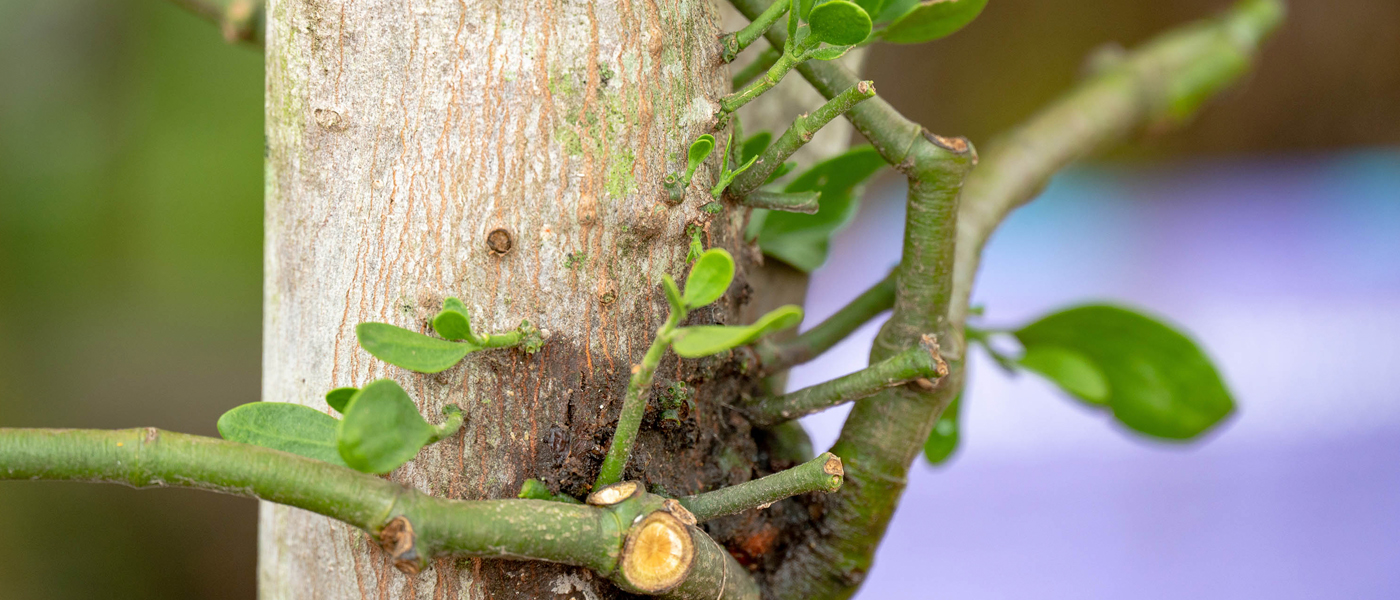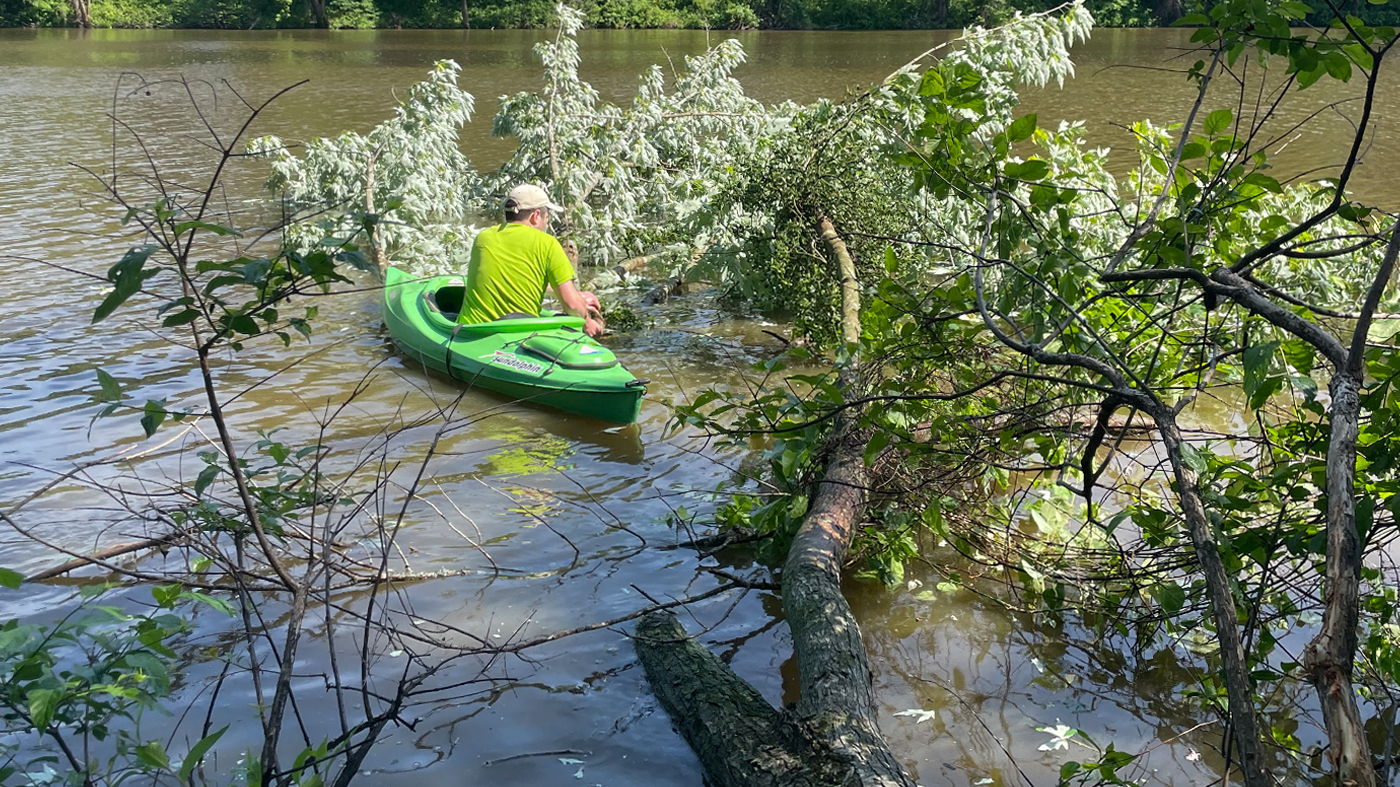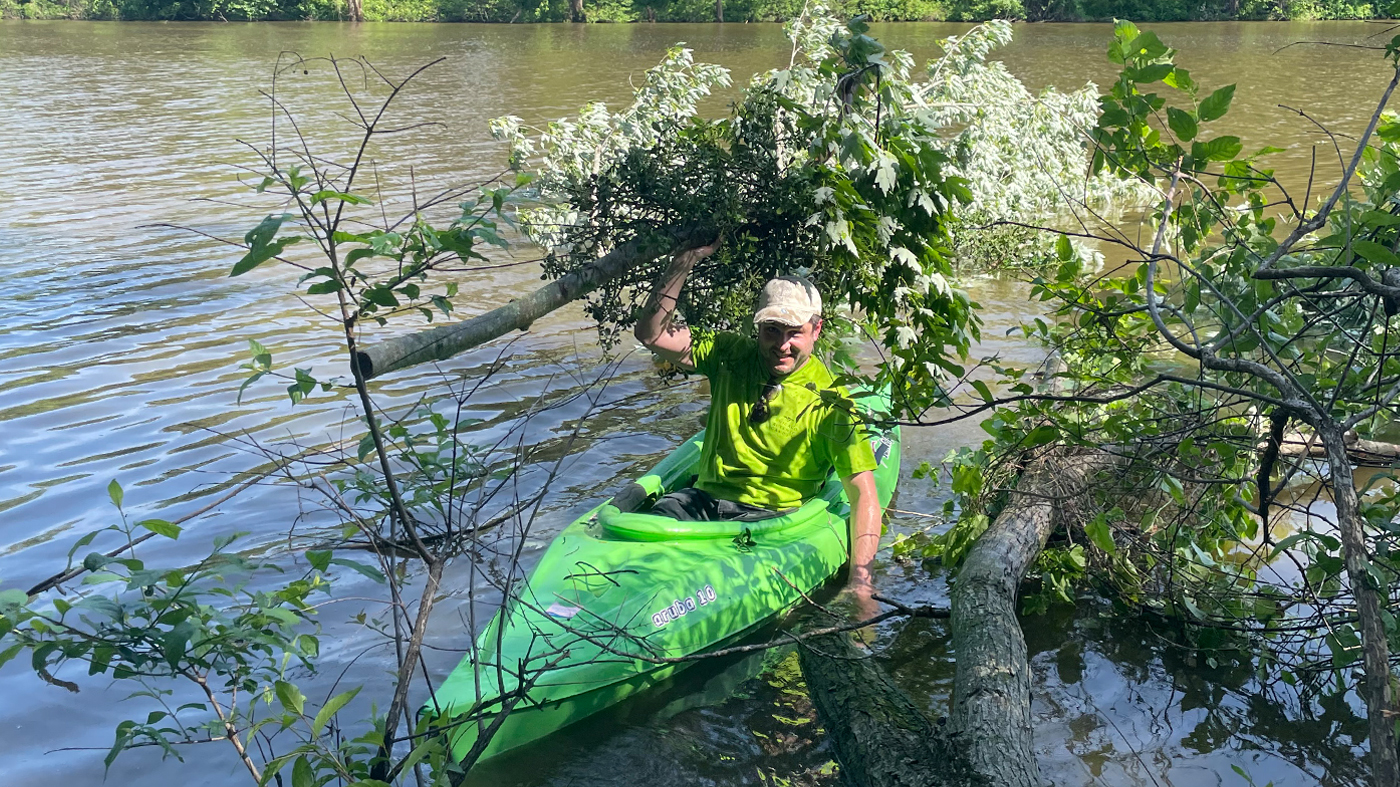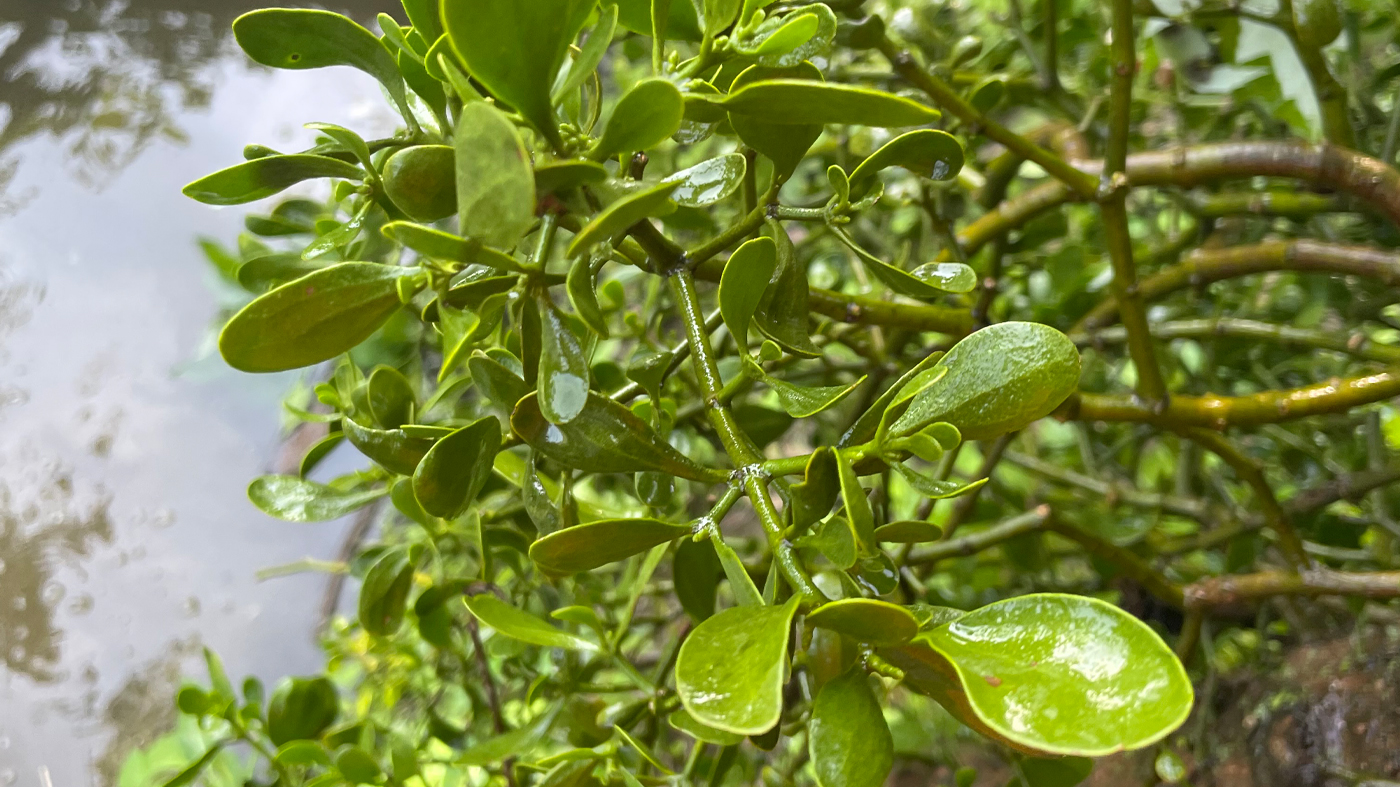

News
Garden Stories
Loving mistletoe—but not for the reason you think
What happens when you try to tell a science story with wild mistletoe? The backstory involves a 6½ hour drive to the Kentucky border and tricky hand-paddling on an overloaded kayak.
We thought that mistletoe would be the perfect plant to explain plant relationships as part of a science display for Love in Bloom, this summer’s theme at the Chicago Botanic Garden. Mistletoe—a plant that typically inspires romance—is actually a parasite. The plant’s roots penetrate the bark of a host plant and steal its nutrients.




All photos in the wild courtesy of Jenny Lesko, Illinois Department of Natural Resources Division of Forestry
Exhibits horticulturist Jason Toth could not find the right kind of mistletoe for sale anywhere. And it would take too long for our production greenhouse to grow the plant.
Even if he had found a cutting, Toth realized, that would not be good enough. He did not want pretty, ribbon-topped mistletoe, anyway. The mistletoe had to be clinging to a host tree to help tell a story about the complex relationships that plants have—with fungi, animals, and one another.
“It kept me up at night, worrying about not having mistletoe,” Toth said.
He studied an online map. In the United States, mistletoe grows as far north as the southern tip of Illinois. Toth began contacting foresters in that area with the Illinois Department of Natural Resources (DNR). Had any of them spotted wild mistletoe (Phoradendron leucarpum) in their jurisdictions? Forester Jenny Lesko had.
In late spring, Toth got permission from the DNR to harvest mistletoe. He drove more than 400 miles to meet Lesko in woods near a lake, where they found mistletoe on a fallen silver maple tree in the water.
As luck would have it, Lesko had brought a kayak from home, and Toth was an experienced paddler.
“It’s not very often I get to incorporate a kayak into forestry work,” said Lesko, “and I was not-so-secretly hoping we would have to use it.”
Toth didn’t hesitate. He borrowed the kayak and hand-paddled out to the tree. With a hand saw, he pruned off the branches that had the most mistletoe.
Lesko watched from shore. “I thought, he better not fall in—I don’t want this day to end in a water rescue!” she said. “I was also worried he would have trouble cutting off the branches, but he had a good saw.”
Toth hefted the branches on his back and hand-paddled back to shore. It was a bit tricky, with 8-foot-long branches—heavy with fragile mistletoe and waterlogged—slung over his shoulders. He repeated the trip seven or eight times.
Then, with Lesko’s help, he dragged each of the branches 100 feet through the woods to his van.
“Getting it back was a pleasure,” he said, “knowing that I actually had it in hand. The hard part was finding it.”
You can see the wild mistletoe as part of a science exhibition at Love in Bloom, in the English Walled Garden overlook.
Note that in parts of the country where mistletoe grows, experts recommend that homeowners prune infested branches as soon as possible to avoid spread and damage to the tree.

